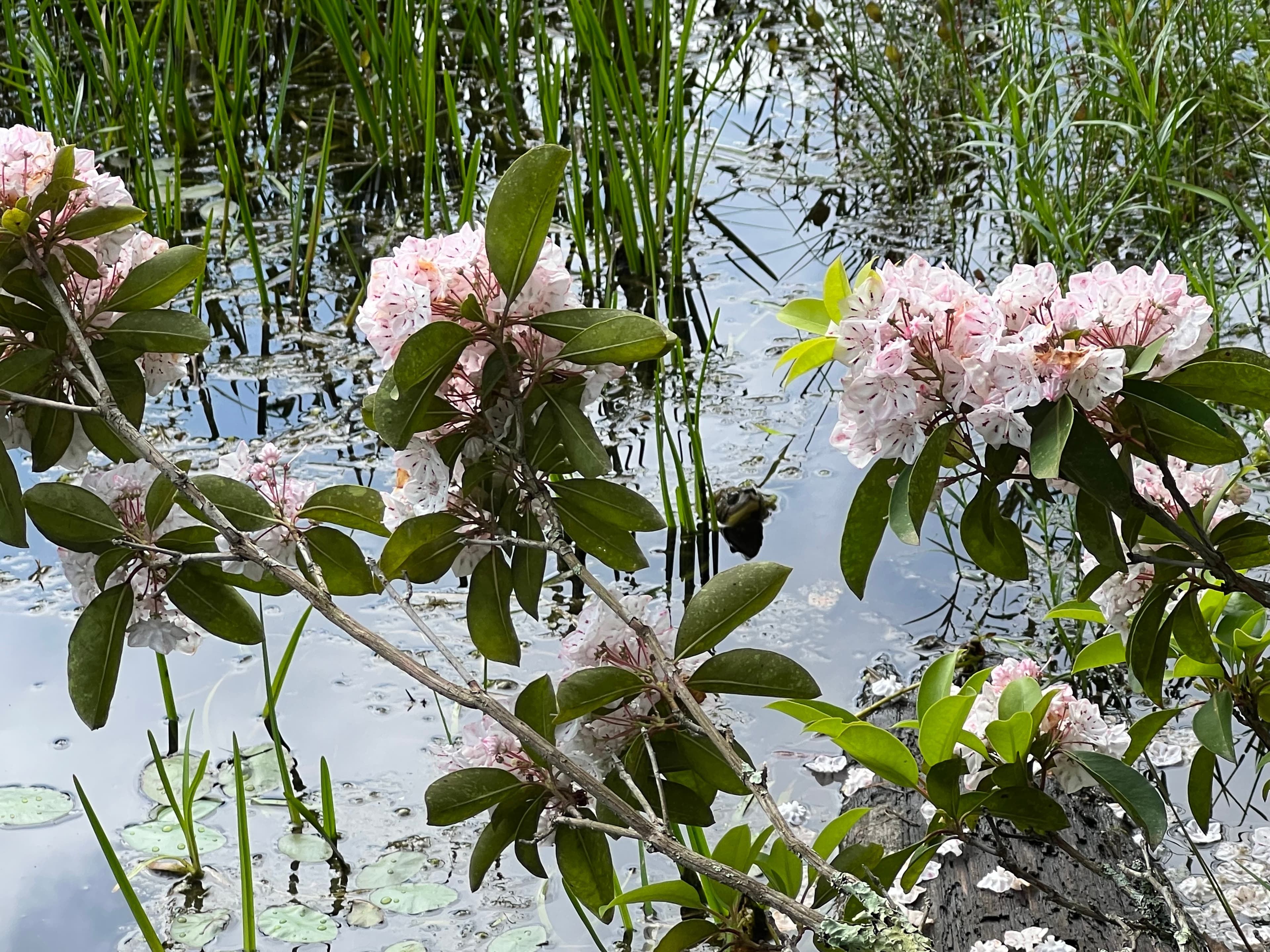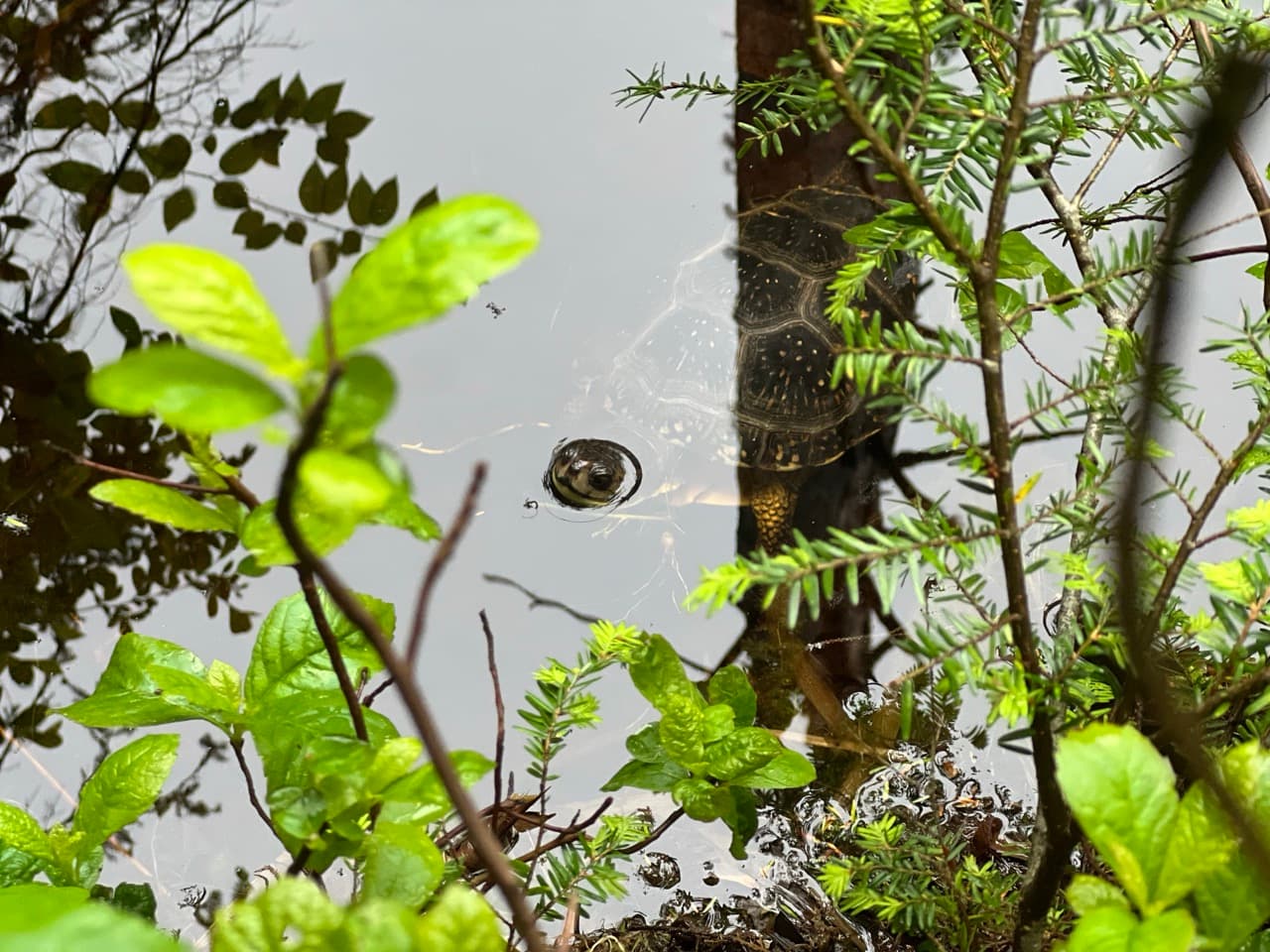Why to Keep Wild Turtles Wild
It is critical to the long-term survival of wild turtles that individuals never be taken from the wild. This article is to explain the many reasons it's so important turtles remain in their natural environments.
Call or text us anytime at(603) 417-4944if you think a turtle needs help.

Reason #1: Removing a turtle from the wild is a permanent loss to its population.
Turtles are among the longest-lived animals on Earth. Many species have lifespans comparable to humans — and some live even longer. These resilient reptiles play a vital role in their ecosystems, and when a turtle is removed from the wild, it loses the chance to reproduce and contribute to the stability of its population.
Unlike many animals, turtles take a long time to reach sexual maturity. For example, Blanding’s turtles don’t begin reproducing until they’re between 14 and 21 years old! That means they must survive for well over a decade before they can even begin to contribute to the next generation.
But once they do reach maturity, turtles can reproduce for decades — sometimes for 20, 40, 60, or even 100 years! This incredible reproductive longevity makes each individual turtle critically important to the long-term survival of its species.
To put this in perspective, consider the eastern gray squirrel. These mammals reach reproductive maturity within their first year and typically have two litters annually. In contrast, turtles must live far longer before they can begin reproducing, making their survival through those early years essential for population growth.
Unfortunately, wild turtles face numerous threats, including habitat loss, road mortality, and the illegal pet trade—a major driver of global population declines. Every turtle taken from the wild is a lost opportunity for future generations and a setback for conservation efforts.
Reason #2: Baby turtles are independent and capable
Turtles know what they're doing. They have been around for over 200 million years -- a lot longer than humans! Their instincts and needs are very different from us, making it easy to misunderstand when a turtle requires help.
Did you know that turtles do not need nor receive any parental care? Mom lays her eggs and then immediately returns to her home while the eggs incubate and hatch on their own some months later. When a hatchling emerges from the nest, it's already equipped with everything it needs to seek out its preferred habitat.
The truth of the matter is that not all of these hatchlings are going to make it, but don't despair! Mother nature knows what she is doing, and it is best to just let nature take care of itself. Sometimes, we can do more harm than good even with the best intentions at heart.
So, when you find hatchling turtles, their instincts are helping to guide them towards the body of water they will call home (assuming it's an aquatic turtle). They are very tied to their local environments and the furthest they should ever be moved is across the street in the same direction they are heading. If in doubt about a turtle's health or the situation, call a wildlife rehabber who works with turtles -- we are here 24/7 to help.
See the Turtle Rescue League's Turtle Hatchlings – Not Always Cute and Probably Not Dying blog post for more great context.


Reason #3: Turtles are intimately tied to their local environments
Did you know a turtle might spend its entire life in an area no larger than a football field? Each species has unique adaptations that help it thrive in its specific habitat. Even different populations of the same species can develop specialized traits suited to their local environments.
A wild turtle knows its habitat intimately. It understands where to find food, shelter, mates, and safe nesting sites. It returns to the same hibernaculum year after year to survive the winter, knows the best places to find a mate during breeding season, and for females, has identified ideal nesting grounds to lay her eggs. Turtles navigate between ponds, wetlands, and uplands with precision, seeking out seasonal resources and safe places to rest or estivate during hot summer days.
From the moment they hatch, young turtles begin learning the landscape, building a mental map of their surroundings and developing the instincts they’ll need to survive. If a hatchling is taken from the wild, it loses the chance to learn these critical survival skills. Without them, it may never be able to return to the wild.
Removing a turtle from its habitat is more than just relocation, it’s a traumatic displacement. Imagine being snatched from your home and dropped into a small, unfamiliar room halfway across the world, expected to live out your life there. That’s the reality for a wild turtle taken into captivity. It’s stripped of everything it knows and needs to thrive. A turtle that is taken from its home and kept in captivity will always be at a severe disadvantage when it comes to rerelease. We can avoid this dilemma altogether by keeping wild turtles wild.
Reason #4: Wild turtles need their natural immunities
Staying healthy takes a combination of a varied diet, regular exercise, and maintaining a strong immune system. One of the ways our immune system adapts to new threats is through exposure to the various pathogens in our environment, which allows the immune system to develop and remember a defense strategy to protect against future encounters more effectively.
A turtle's immune system functions in much the same way. Beginning from the very day a turtle hatches, it is building up immunological resistances to the diseases present in its natural environment. Being able to continuously improve the immune system in moderation over time is what helps to make this strategy so effective, and one of the main reasons why a turtle that is taken from the wild may not be able to survive being released back into the natural environment later on.
When a kidnapped turtle has not been allowed to develop its immune system in its natural environment, being released back into the wild involves a sudden onslaught of pathogens that it has never been exposed to before. While a turtle's immune system may be able to successfully combat one disease on its own, the threat of multiple diseases all at once may be enough to overwhelm that turtle's natural defenses and cause it to become gravily ill and ultimately perish.
The best way to avoid this predicament and ensure the best chances for a turtle's long-term survival is to leave it alone and let that wild turtle stay wild. If you think a wild turtle needs assistance or rescuing, please don't hesitate to give us a call. We are here to help!


Reason #5: Turtles kept in captivity can spread disease to wild populations
Biosecurity refers to the protocols we follow to prevent the introduction and spread of disease among wildlife populations. In rehabilitation work, biosecurity is absolutely critical—because even a single lapse can have devastating consequences for the very animals we’re trying to protect.
Sometimes, it’s obvious when an animal is sick. But often, it’s not. Wild animals have strong survival instincts and will hide signs of illness to avoid appearing vulnerable. Some may even be asymptomatic carriers, meaning they can spread disease without showing any symptoms themselves.
We frequently receive calls from people who want to surrender a turtle they originally took from the wild and kept as a pet, hoping it can be rehabilitated and released. While the intention may be good, the risk to native populations is significant. Even with extensive precautions, releasing a turtle that has lived in captivity always carries the danger of introducing disease.
Testing for pathogens is expensive, and more importantly, incomplete. We simply cannot test for every possible disease. Turtles can become infected in captivity through shared tanks, live food, contaminated water or items, etc. These exposures can introduce pathogens that wild populations have never encountered.
Reptiles and amphibians are in global decline. In New Hampshire, 4 out of 7 native turtle species are listed as threatened or endangered. The introduction of a novel disease could be catastrophic for these vulnerable populations.
Reason #6: Turtle care is not easy
Keeping a turtle as a pet may seem simple, but the reality is far more complex. There are far more pet turtles in need of homes than there are homes prepared to care for them properly. Taking a wild turtle and turning it into a pet not only removes it from its natural habitat - it also overlooks the many orphaned pet turtles already waiting for rescue.
Turtles are incredibly long-lived animals. Depending on the species, they can easily outlive their owners, which means that pet turtles often end up needing new homes later in life. This long-term commitment is one of the many reasons turtle ownership should never be taken lightly.
Turtles are ectotherms, meaning they rely on external sources to regulate their body temperature. In captivity, they require a specialized setup that is large enough to have an appropriate thermal gradient, and includes UV-B lighting, which is essential for proper shell and bone development. These bulbs must be replaced every 6 months or sooner, even if they still appear bright, because UV-B output diminishes over time. Importantly, UV-B rays cannot penetrate window glass, so placing a tank near a sunny window is not a substitute for proper lighting.
Health issues are common in captive turtles, often due to inadequate husbandry. Creating a suitable habitat is complex and very costly, and requires knowledge, time, and significant ongoing maintenance. If you’re truly prepared to take on that responsibility, we can connect you with reputable rescues we work with. Whatever you do, avoid adding to the problem and never take turtles from the wild.

Reason #7: Female turtles with eggs are on the move
During nesting season (May-July) gravid turtles (female turtles with eggs) are on the move to lay their eggs. These journeys can take them far from their usual habitats, as they are incredibly selective about where they choose to nest, often returning to the same location year after year.
Unfortunately, this seasonal migration puts them at great risk. The majority of turtle patients we receive during nesting season are females, often injured while crossing roads, attacked by pets, or harmed in other human-dominated spaces. Every female turtle admitted to our clinic undergoes radiographs (X-rays) to determine if she is gravid. If she is, our top priority becomes helping her lay her eggs as soon as possible.
Why is this so urgent? If a gravid turtle is unable to lay her eggs, they can rot inside her, leading to a fatal condition. We monitor her progress closely, and radiographs help to ensure all eggs have been laid.
Sadly, we sometimes see cases where a nesting turtle was picked up by a well-meaning person before she could finish laying her eggs. In captivity, stress often prevents her from completing the process. By the time she shows signs of illness, it may be too late — the retained eggs have already begun to decay, and her life is in danger. These heartbreaking situations are preventable.
By simply leaving wild turtles alone, you give them the best chance to survive and reproduce. If you’re lucky, a nesting turtle might return to your yard year after year, offering a rare glimpse into her life story.
And remember: it’s illegal in New Hampshire to disturb any turtle from May 15 to July 15, when females are actively nesting. Respecting this law helps protect our native species during one of the most vulnerable times of their lives.

Thank you for reading! We hope you found this helpful. We are always here to talk more about this, if you or any friends have further questions on the matter. Our email is info at nhturtlerescue.org. Thank you for caring about turtles!
